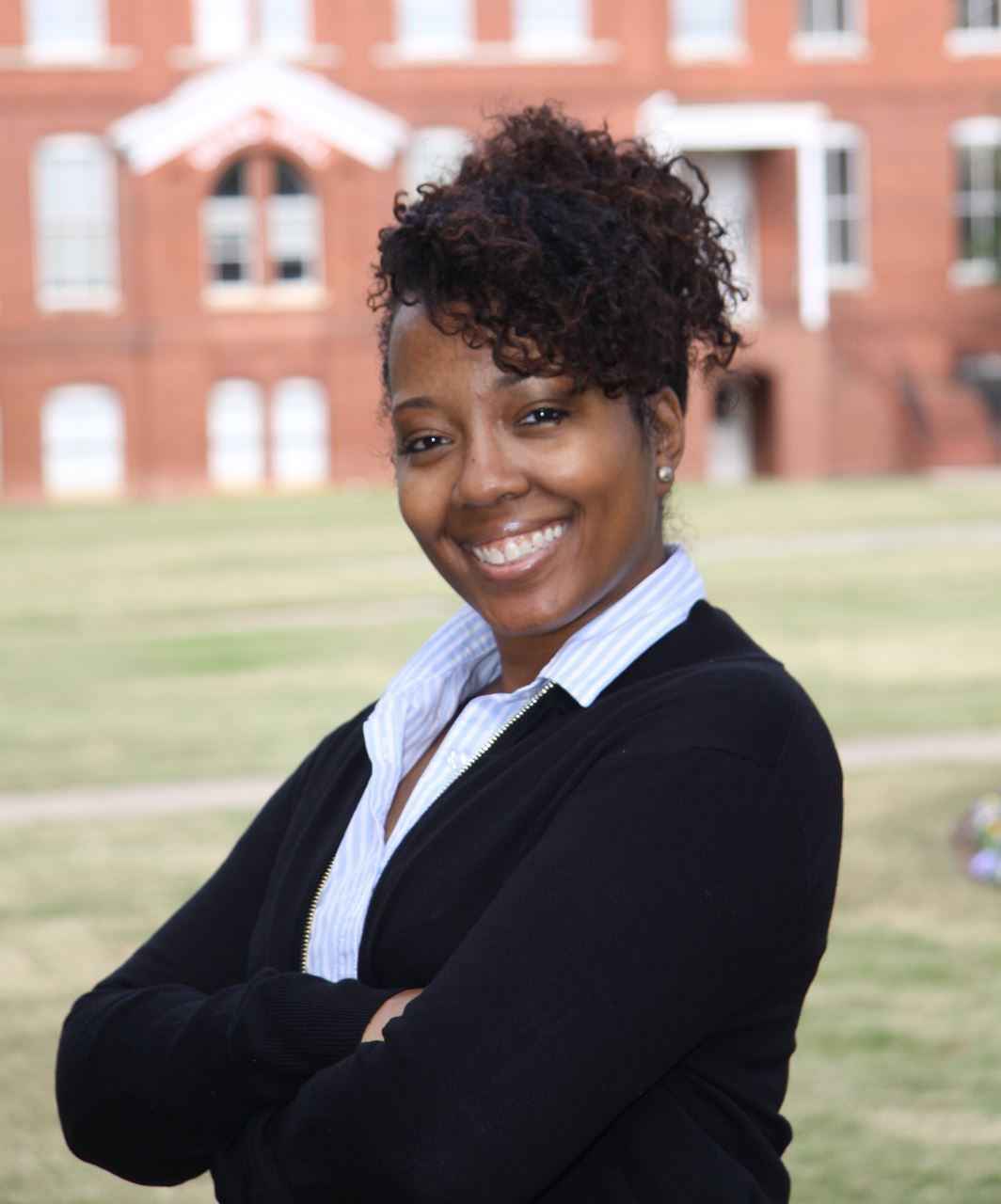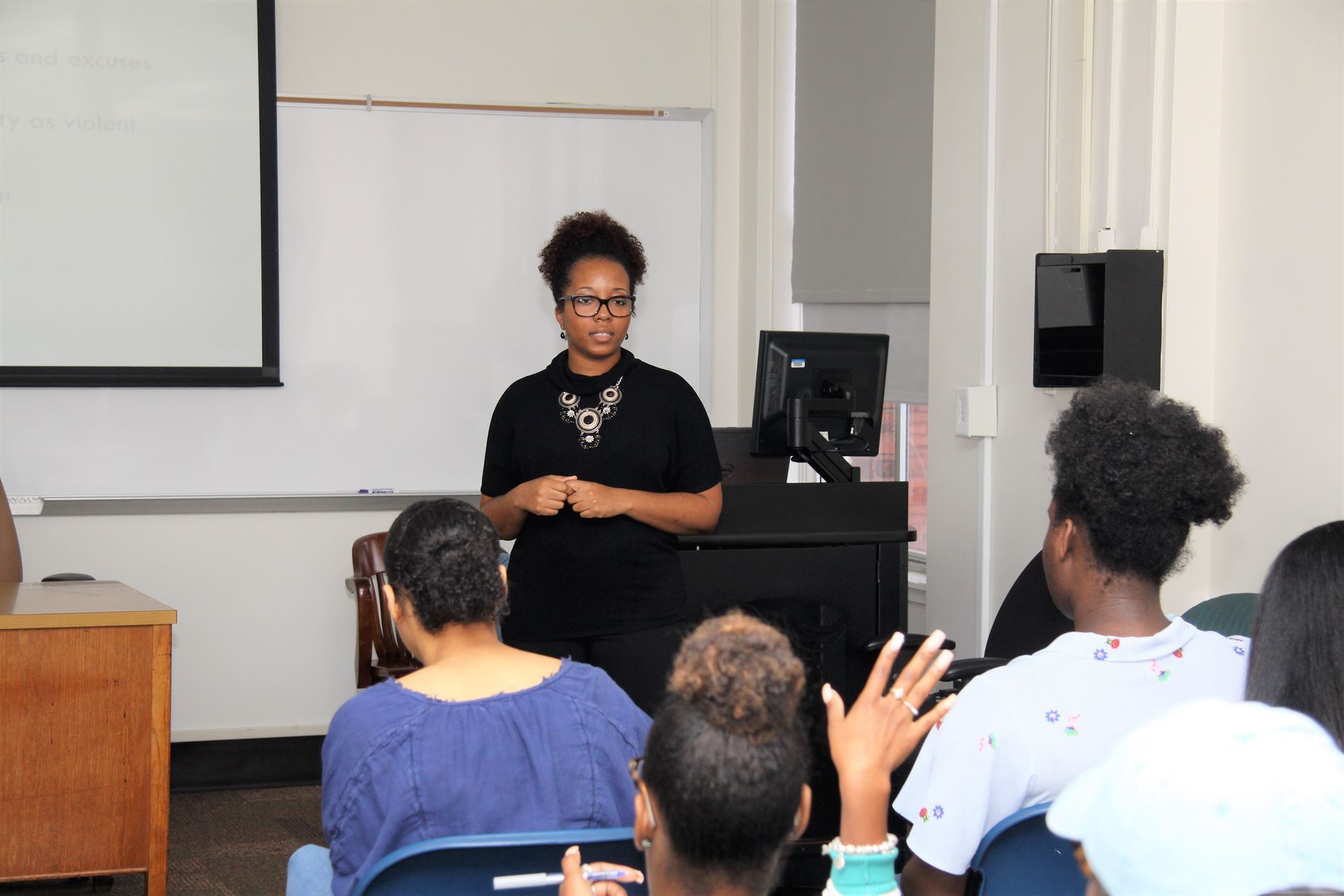 School name: Spelman College
School name: Spelman College
Type of school: A private historically Black liberal arts college for women
School locale: City
Classes you teach:
Psychology of Women, Psychology of Racism, Research Methods in Psychology, and Advanced Research Seminar
Average class size: 20
What’s the best advice about teaching you’ve ever received?
The best teaching advice I received was that teaching is all about taking risks and failings are essential to bring clarity, understanding, and innovation into the classroom. Also, I was told to be honest and upfront with my students. In addition, it’s important to be thorough when instructing students to help them understand the purpose of assignments, in class activities, and course policies. I always try to reiterate the purpose of an assignment and in class activities.
What book or article has shaped your work as a psychology teacher?
Two books that have shaped my teaching are Teaching to Transgress: Education as the Practice of Freedom by bell hooks and Intersectional Pedagogy: Complicating Identity and Social Justice by Kim Case.
 Briefly tell us about your favorite lecture topic or course to teach.
Briefly tell us about your favorite lecture topic or course to teach.
My favorite course to teach is Psychology of Women. This course serves as one of the race and gender required courses for psychology majors and an option for the general women’s studies required courses for all students. I enjoy interacting with students and helping them explore the intersection of their own race, gender, and other cultural identities, while examining the social construction of gender. Specifically, I especially enjoy teaching about the experiences of women in the workplace because this is my area of research interest which focuses on how Black women and other women of color navigate through workplace politics.
Briefly describe a favorite assignment or in-class activity.
My favorite in class activity is a role playing activity on the topic of gender comparisons in social behavior and communication. The goal of this activity is to encourage students to develop their own critical intellect with regards to culturally inherited gender stereotypes. Also, it helps students look at their own assumptions about what it means to act like a man and what it means to act like a woman. I ask for two volunteers to come up to the front of the room. Using the gender binary framework, I assign the student volunteers to be either the man or woman, and according to their assigned gender, they are asked to do the following: a) walk to the other side of the room, 2) sit in a chair, and 3) and make a comment about a class topic. I then ask students, “Where do we learn gendered behavior?” and “How do your own behaviors relate to the gendered behaviors illustrated in the different scenarios presented?” Students openly express how their own behaviors were consistent or inconsistent with the actions of the student volunteers. At the end of the activity, students identified ways in which their own behaviors have been affected by gender stereotypes.
What teaching or learning techniques work best for you?
Think, pair, and share using a photo, video, or discussion question is my personal preference. This strategy gives students time to think about their responses and helps all students become active participants in learning, especially those who might not feel comfortable sharing their responses with the entire class. Also, peer learning is an effective teaching strategy that I use involving student learning with, and from, each other. I have students serve as “discussants.” In groups of 3-4, students are required to facilitate class discussions based on their selected course topic using supporting materials, such as news, articles, media, and in class activities.
 What’s your workspace like?
What’s your workspace like?
My workspace is cozy, but often times it is messier than I would like for it to be! I wanted to make sure that I created a vibrant office space where I would enjoy completing my work and a space that is a welcoming environment for my students and colleagues. I have inspirational quotes around my office and some of my favorite books. From time to time, I get compliments from students and my colleagues on my office.
Three words that best describe your teaching style.
Engaging, motivating, and inclusive
What is your teaching philosophy in 8 words or fewer?
Inspire students to be innovators and change agents.
Tell us about a teaching disaster (or embarrassment) you’ve had and how you dealt with the situation.
There’s been days where I could not say anything right. I would mix up my words or could not get the technology in the classroom to work. When it happens, I tell students that I am having an “off” day and I make sure I’m on point for the next class.
What is something your students would be surprised to learn about you?
If I was not a college professor I would have been the next Misty Copeland! At the age of four, I started taking ballet and tap dance classes. I also was on the dance team my senior year in high school and on the dorm stroll team in college. I always thought that I would become a professional ballerina and teach ballet classes for a living.
What are you currently reading for pleasure?
My friends and I started a book club and we are currently reading bell hooks’ Sisters of the Yam: Black Women and Self Recovery.
What tech tool could you not live without?
My laptop and cell phone!
What is your hallway chatter like? What do you talk to colleagues about most (whether or not it is related to teaching/school)?
I typically talk to my colleagues about effective classroom management strategies, what’s happening on campus (there are always interesting things happening on campus), and plans for the weekend.
